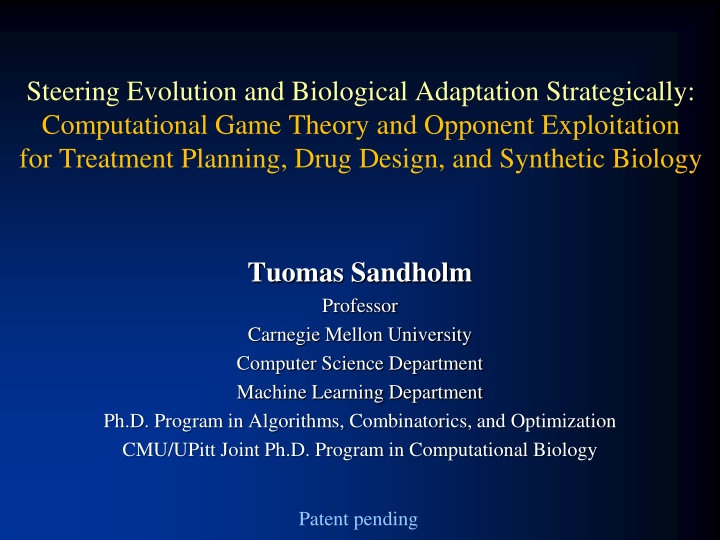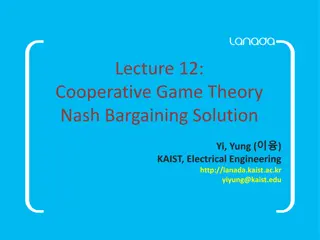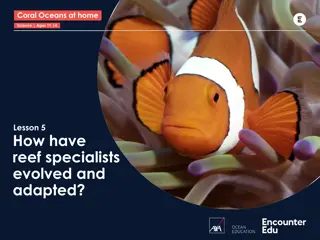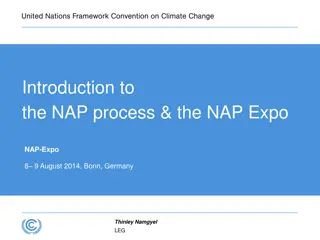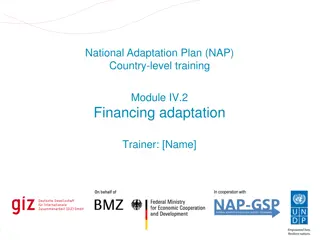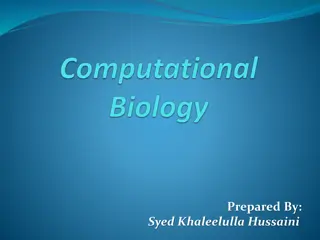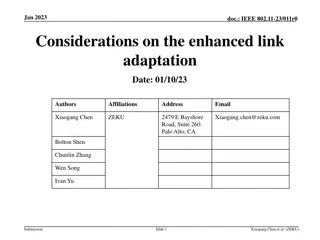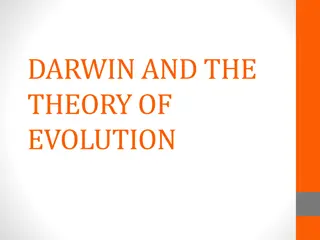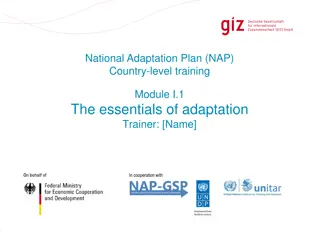Strategic Evolution and Biological Adaptation in Computational Game Theory
Explore the strategic use of evolution and biological adaptation in computational game theory for treatment planning, drug design, and synthetic biology. Learn how opponent exploitation and game theory inform decision-making to address challenges in therapeutic development and technological goals.
Download Presentation

Please find below an Image/Link to download the presentation.
The content on the website is provided AS IS for your information and personal use only. It may not be sold, licensed, or shared on other websites without obtaining consent from the author.If you encounter any issues during the download, it is possible that the publisher has removed the file from their server.
You are allowed to download the files provided on this website for personal or commercial use, subject to the condition that they are used lawfully. All files are the property of their respective owners.
The content on the website is provided AS IS for your information and personal use only. It may not be sold, licensed, or shared on other websites without obtaining consent from the author.
E N D
Presentation Transcript
Steering Evolution and Biological Adaptation Strategically: Computational Game Theory and Opponent Exploitation for Treatment Planning, Drug Design, and Synthetic Biology Tuomas Sandholm Professor Carnegie Mellon University Computer Science Department Machine Learning Department Ph.D. Program in Algorithms, Combinatorics, and Optimization CMU/UPitt Joint Ph.D. Program in Computational Biology Patent pending
Vision [AAAI-15] Living organisms evolve/adapt to challenges => key difficulty in developing therapies since challenged organisms develop resistance Idea: harness evolution/adaptation strategically for therapeutic/technological goals Model this as a 2-player 0-sum incomplete-information game 0.2 0.3 Information set 0.5 0.5 0.5 A strategy (contingent plan) is computed for the specific game at hand
Scalability of (near-)equilibrium finding in 2-player 0-sum games Information sets 100,000,000,000,000 10,000,000,000,000 1,000,000,000,000 100,000,000,000 10,000,000,000 1,000,000,000 100,000,000 10,000,000 Losslessly abstracted Rhode Island Hold em [Gilpin & Sandholm] 1,000,000 2005 2006 2007 2008 2009 2010 2011 2012 2013 2014 2015
Leading approach to computing game-theoretic strategies for even larger games [Gilpin & Sandholm EC-06, J. of the ACM 2007 ] Now used by all competitive No-Limit Texas Hold em programs Original game Abstracted game Automated abstraction 10161 Equilibrium-finding algorithm Reverse model Nash equilibrium Nash equilibrium [Foreshadowed by Shi & Littman 01, Billings et al. IJCAI-03]
Safe but sometimes to conservative
Opponent modeling & exploitation Start playing game theoretically. Adjust toward exploiting opponent in points of the game where good data about opponent s play has been amassed [Ganzfried & Sandholm 2011] -safe best response [Johanson et al. 2007, Johanson & Bowling 2009] Compute a set of strategies. Use (no-regret) learning to determine which performs best [Bard et al. 2013] Best response (stochastic optimization) -> trajectory-based optimization, policy gradient, Safe opponent exploitation [Ganzfried & Sandholm 2012, 2015] Evolution and biological adaptation are myopic => can trap it More generally, minimize opponents utility (multi-trap, ...) Recently started studying complexity of, and algorithms for, this [Kroer & Sandholm IJCAI-15]
Benefits Most medical treatment today is myopic => Puts treater at same disadvantage that opponent has Algorithms can often solve games better than humans Speed & automation => custom plans Potential to guide medical research
Battling disease within an individual patient E.g., opponent = HIV Opponent s actions include evolving the virus pool within patient Treater s actions include treatments (e.g., drug/cocktail) and tests Could even include de novo drugs from large/infinite space A model can be used to predict how well each of the drugs in the cocktails would bind to each mutation at each site
Battling disease in patient population E.g., opponent = pandemic Actions of disease at any point in the game: Spread of various strands and mutations to different regions/population segments Actions of treater at any point in the game: Which drug/cocktail/quaranteening/tests to use in which part of the population
Steering a patients own immune system Opponent = one s own T cell population Tune it to fight cancer, autoimmune disease, infection, Actions of treater at any point in the game: Block cytokine receptor signaling Alter transcription factor expression Add or remove cytokines Reversible antisense translational repression Can be done in combinations and for different durations Plan
Applications beyond battling diseases Cell repurposing Could one evolve a blood cell into a liver cell a cancer cell (T47D) into a (M1) macrophage Could one grow a missing organ or limb? Synthetic biology Evolve bacteria that eat toxins or biofilms without introducing foreign genetic material
Tackling questions in natural science Enables one to formalize and potentially answer fundamental questions in natural science Can a certain kind of cell be transformed into a certain other kind of cell using evolutionary pressures using a given set of manipulations? How much more power do multi-step treatment plans offer? Does there exist a strategy that will destroy a given diverse cell population (e.g., cancer) in a way that leaves no persistors? What is inherently impossible to achieve via evolution?
